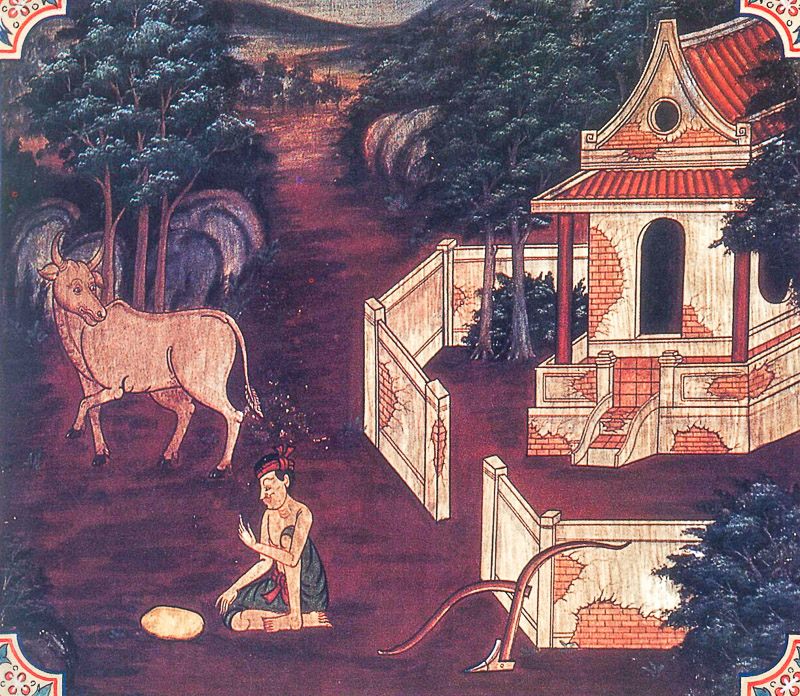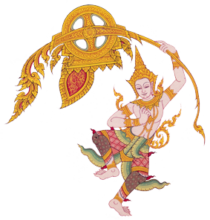
The Bodhisatta was once a farmer. One day, while plowing his field, he struck a giant gold bar, two meters long and as thick as his thigh, that had been buried by a wealthy merchant who died long ago. The Bodhisatta dug it out, but it was too heavy to lift. He took a seat and thought about his good luck. He would use some of his new wealth to live on, some for trading, bury some for the future, and give away some as charity. This gave him the idea to cut the gold bar into four pieces, and he carried each to his home.
In the Lifetime of the Buddha
A man who had just become a disciple of the Buddha was overwhelmed by the many rules of morality he was told to learn. He felt he would be unable to fulfill his vows, despite his desire to do so. He decided to give back his bowl and robes and return to doing good deeds as a layman, but his teachers urged him to talk to the Buddha first. The Buddha scolded the teachers for not explaining things well, and then he told the disciple there were only three moral rules he must know: guard against doing evil through speech, thought, and action. Full of joy over this insight, he remained a disciple and became an arahant a few days later.
When the Buddha heard some of his disciples discussing this event, he told them this story to explain that heavy burdens become light when broken into smaller pieces.
The Buddha did not identify any earlier births other than his own.
